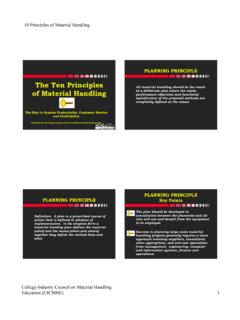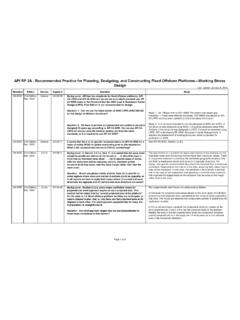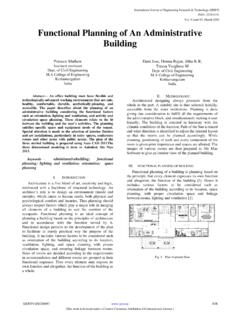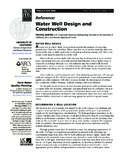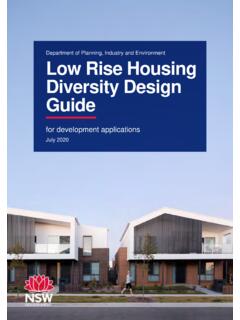Transcription of Lesson 3.2: Residential Space Planning - SoftPlan
1 31 Lesson : Residential Space Planning A. Assessing the client s needs 1. A successful design adequately accommodates within a structure the lifestyle and specific needs of the user. 2. Determine specific requirements of the client a. Prepare a list that includes design considerations and necessities 1) Family size and structure 2) Family or individual s interests and activities 3) Budget of project 4) Location of site 5) Number of levels 6) Architecture style 7) Zoning ordinances and covenants B. Levels 1. One story homes are typically compatible with a limited number of architectural styles and have the potential to be more costly if located on a larger site. 2. One and one-half story homes utilize the attic as a living Space through structural elements including a steep roof and dormers projecting from the roof to let in air and light.
2 3. Two story homes are economical to build because of smaller roof and foundation area . 4. Split-level homes are developed for a sloping lot, and separate sleeping, living, and recreation on different levels. C. Traffic patterns 1. Are a primary consideration in designing a functional plan. Competency: Draw Floor Plans Objective: Analyze accepted principles of single-view Residential Space Planning 322. Main traffic areas include the halls, stairs, foyers, entrances to rooms, and exterior entrances. 3. Travel should be short and if possible not pass through other rooms. 4. Trace various routes through the house to analyze traffic flow. D. Halls a. Minimum width of 3 0, 3 -4 is preferable b. Plan for the movement of furniture c. Long hallways waste useful Space 5. Doors should be planned and located to guide traffic through rooms. 6.
3 Doors and openings located near a corner of a room usually result in less wasted Space . Leave a minimum of for casing inside corner to frame. 7. Entrances a. Usually include an outside and inside waiting area . b. Flooring materials should not be affected by water or dirt. c. Minimum of 2 entrances d. Main house entrance 1) Should be easily identified 2) Should include a foyer if Space permits i. size depends on size of house ii. often omitted in small houses 3) Should be able to view visitors without opening a door 4) Minimum entrance is 3 -0 . D. Room Planning 1. Living area a. Generally, comprises 1/3 of the house and includes the living room, dining room, foyer, recreation or family room, great rooms, sunroom, home office, den or other gathering spaces b. Types of floor plans 1) Closed/Formal plans place rooms in cubicles accessible through doors and openings.
4 - Found frequently in traditional style homes 33 2) Open/Informal plans include partial separations or may combine several spaces (rooms) into one open area . i. area rugs or furniture provide a visual separation ii. Floor elevations and ceiling heights may differentiate c. Living room 1) Size and layout is determined by its purpose i. TV room ii. Center of activities iii. Entertaining guests iv. Furniture v. Living habits of occupants 2) Limit traffic patterns through living areas 3) Centrally located near an entrance 4) Consider views to outside 5) Dining and entertaining are closely related and should be located in close proximity to each other.
5 D. Dining room 1) Size and layout is determined by its purpose i. Closed/Formal or Open/formal plan ii. Presence of smaller eating areas iii. Number of guests to be served iv. Furniture 2) May be accessible to porch or deck for outside dining 3) Ideally located between the family room and kitchen 3) Allow ample Space for serving and movement 2. Sleeping area a. Includes bedrooms, baths, dressing rooms, and closets. b. Homes are categorized by the number of bedrooms and baths. c. Three bedroom homes are most common. d. Rooms are often grouped together in a quiet, separate wing or level.
6 E. Master bedroom may be separated from other bedrooms. f. Bedroom size and layout is related to furniture and function. 1) Minimum size is 70 square feet or 7 in any direction. 34 2) Consider furniture items and size to be used 3) Plan for movement of furniture 4) Consider planned activities i. Writing ii. Reading iii. Watching TV iv. Hobbies g. Typically, bedrooms should be accessible to a hall. 1) Doors should swing into the bedroom.
7 2) Minimum width of door to bedroom is 2 -8 3) Door size should allow for furniture movement. h. Windows 1) Used for ventilation and light 2) Must be included as a second means of egress. 3) Windows use wall Space that could be used for furniture arrangement. i. Dressing areas 1) May be an alcove or a separate room 2) May include sinks, make-up counters, mirrors, chairs, closets and other dressing items 3) Often adjacent to the master bath j. Bathrooms 1) Includes plumbing fixtures such as the toilet, shower, tub, sink, and bidet i. Lavatories may be wall-hung, pedestal, or countertop.
8 Ii. Various sizes and styles of fixtures are available. iii. Allow 15 minimum from center line of water closet to wall or adjacent fixture 2) Plumbing wall for toilet should be constructed of a minimum of 2 x 6 studs (Partition ) 3) May be compartmentalized 4) Bedrooms should be placed close to a bath or have an adjacent bath. 5) The master bedroom usually has an adjacent bath. 6) Bath sizes vary according to Space available. 35 i. Minimum size for full bath is 5 0 x 8 0 ii. A half-bath contains a lavatory and a toilet iii. Minimum size for half-bath is 3 0 x 7 0 7) Bath furnishings may include built in clothes hampers, shelves for linens, counter Space , medicine cabinets, and mirrors.
9 8) Must have natural ventilation and or fan to remove moisture 9) Grouping baths increases efficiency by allowing for centralized plumbing. 10) Modifications are required for special medical/disabled clients. One accessible bathroom on the first floor is required. This bathroom must have a 32 swing door or 30 pocket door to be designated accessible. 11) Linen closets should be minimum of 18 deep. 3. Service area a. Kitchen 1) Purpose is food preparation but may include dining, laundry, and storage 2) Kitchen is made up of three work centers: i. Food storage and preparation (refrigerator, cabinets, pantry, countertops) ii. Cooking (range, oven, microwave, countertops) iii. Clean-up (sink, dishwasher, countertops) 3) Work triangle measures efficiency i. A line from the center front of each work center makes up the work triangle.
10 Ii. The sum of all sides of the work triangle should not exceed 22 . iii. When possible, traffic lanes should not impede the work triangle. 36 An example of a work triangle: 4) Countertops and cabinets must be sufficient to allow for kitchen operation and storage. i. Draw base cabinets 24 deep and wall cabinets 12 deep. ii. Draw wall cabinets as dashed lines (cabinet function, auto cabinet) 5) Kitchen styles i. Straight line - Used in smaller spaces such as cottages or apartments -Provides a limited amount of cabinets An example of a straight line configuration: ii. L-shape -Not used for large kitchens where walls may become too long -Creates an efficient workspace and is more attractive than straight line An example of an L-shape configuration: 37 iii.
